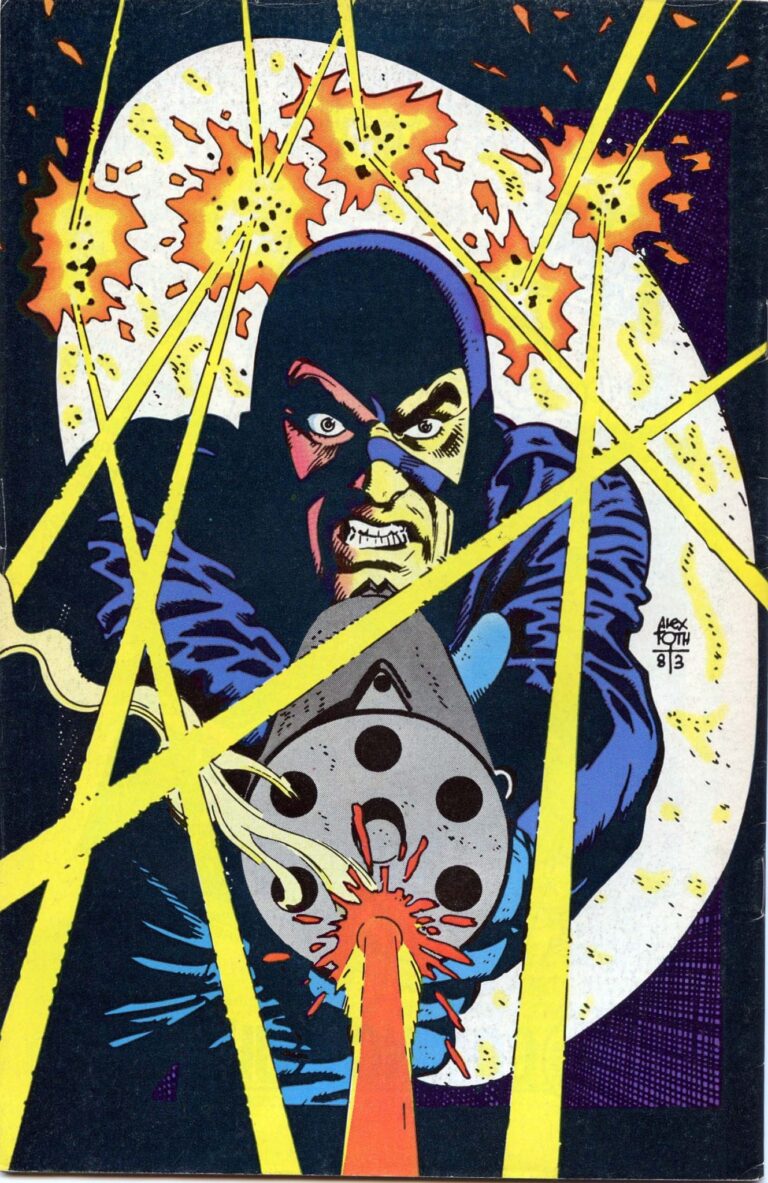Today on the site, Marc Sobel returns with a new installment of his Strip Mine column, in which he concludes his "Bijou Funnies" series.
Welcome back, fellow longbox junkies! In our last installment of the Strip Mine, I teased that I hadn’t gotten to “the good stuff” yet, so, without further ado, here’s the epic conclusion to “Bijou Funnies.”
Marvel Fanfare #10 (August 1983)
By now I’m sure you’ve heard about the great George Pérez’s retirement due to health reasons. Here’s the announcement from Comic Shop News, which, since I am not much of a Twitterer, is where I first heard about it.It’s impossible to put into words how much enjoyment I’ve gotten out of Pérez’s work throughout my life. I’m not sure I love him enough to binge my way through 200+ issues of Teen Titans, but if I were building a Mount Rushmore of my favorite ‘80s and ‘90s superhero artists, he and John Byrne would be locks. Of course, Pérez was so prolific, there’s plenty of his stuff that I haven’t read, but the sweet spot for me is his ‘80s DC work. His Wonder Woman run remains the definitive version of that iconic character, and Crisis on Infinite Earths and The History of the DC Universe are both sumptuous visual feasts I revisit often.
Yesterday, we published Martyn Pedlar's review of Matt Lesniewski's The Freak.
There was an odd digression in a recent article about an artificial-intelligence algorithm generating images to stimulate the part of a monkey’s brain used to recognise faces. “Visual neurons, it seems, like exaggeration,” it read. “In previous studies, [the scientist’s] team showed that face-selective cells will respond more strongly to caricatures than to actual faces.”
Comics are brimming with caricatured faces, of course. Beady eyes, slits for mouths, upside-down 7s for noses. We have no problem responding to them as human, even though their proportions are often strained, distorted, or monstrous. What makes one of these faces ugly – Bernie Wrightson’s monster from Frankenstein, Frank Miller’s Marv from Sin City – and what’s just business-as-usual comic book exaggeration?
The hero of Matt Lesniewski’s graphic novel The Freak has an asymmetrical head: a wide chin, a pointed skull, a thin knot of hair on top. “To many,” the narration goes, “he’s the ugliest man to have walked the planet.” His story begins as he decides to travel to an unnamed city to see if he’ll be treated differently, but immediately he’s surrounded by a crowd, shrieking: “Oh my – that man is revolting!” and “His mere presence decreases the value of this great city” and “I can’t stand the sight of someone so disgusting!” He’s beaten almost to death and his shovel is stolen. It’s his only possession, used for his grave-digging, and he’s determined to get it back.
We also published an excerpt from Joakim Dresher's Motel Universe.
Meanwhile, elsewhere:
—Stan Lee's ex-manager Keya Morgan has been charged with elder abuse.
[L.A. County District Attorney] Jackie Lacey’s crew has hit the Spider-Man and Avengers co-creator’s former business manager with elder abuse charges. Keya Morgan is facing one felony count of false imprisonment of an elder adult, three felony counts of theft, embezzlement, and forgery or fraud against an elder adult, along with an initial elder abuse misdemeanor count.
Morgan took control of Lee’s business affairs and personal life in February 2018 and allegedly isolated the Black Panther co-creator, who died on November 12 last year, from family and friends. Morgan also embezzled or misappropriated $5 million of assets, according to documents filed in Los Angeles Superior Court in 2018.
—The most recent guest on the Virtual Memories podcast is Seth.
“There’s a quality of keeping art private that represents a sort of power. I wonder, if I was independently wealthy, would I keep all my artwork to myself and not release any of it.”
—William Nerrico writes about Gilbert Hernandez's Errata Stigmata.
In the page shown here, lifted from the original comic, Hernandez focuses (pardon the pun) on the connection between seeing and being: the ocular and the existential. In the last panel, the one I have dreams about, a dislocated, disembodied eye explodes with viscera across a mutantly giant television screen with Errata mutely witnessing.
I have gone on to to write numerous articles and soon, three books on Latinas/os and Visual Culture, and I think all of them come back to that panel — the young orphaned witness with her face, unseen, to the screen.







